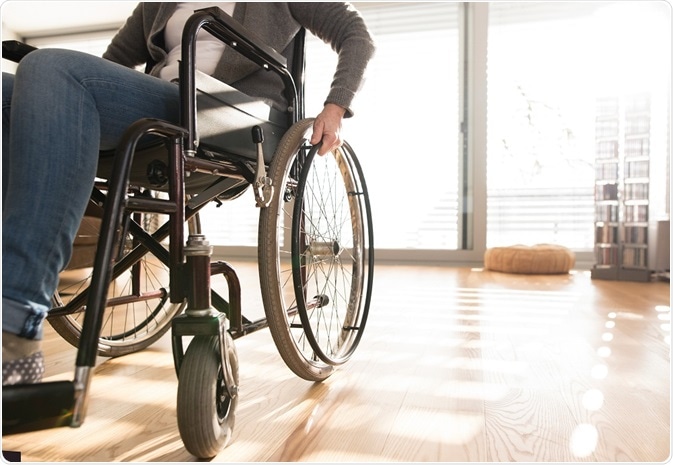Site Under Development, Content Population and SEO, Soft Launch 1st January 2020
Tetraparesis, or quadraparesis, is a condition in which all four limbs are weak. Several causes exist, many of which are treatable.

Credit: Halfpoint/Shutterstock.com
In some patients with tetraparesis, the limbs may lack voluntary motor control, while in other patients, some limbs or parts of limbs may be paralyzed but others function normally. The cause of the weakness is a partial interruption of the nerve impulses passing along the spinal cord, hence the muscles supplied by these nerves do not function normally.
A full neurologic examination is thus essential to identify the pattern of weakness and the involved nerves. This will usually be followed by imaging studies to locate the area of damage causing the sensory and motor weakness. This, in turn, will determine the treatment approach.
Some patients have tetraparesis due to congenital or birth problems. Among these, cerebral palsy (or spastic tetraparesis) is the most common reason.
Causes of tetraparesis which affect the spinal cord include:
Neuropathies which can cause evolving flaccid paralysis include:
The presence of acute hypotonia and hypo- or areflexia along with tetraparesis may signal a lesion or involvement of the lower central nervous system, i.e., the spinal cord.
The presence of spastic muscles and high muscle tone shows upper motor neuron involvement, i.e., of the brain. In cerebral palsy, both upper and lower limbs are symmetrically and intensely affected with a floppy neck, dysarthria and respiratory difficulties in severe cases.
The occurrence of rapidly progressing tetraparesis may signal other conditions. In most cases, it is ascending upwards from the lower limbs, but it may sometimes be a descending weakness. The reflexes are affected early in peripheral neuropathies, but are typically spared in diseases of the neuromuscular junctions and in myopathies until severe weakness begins to appear.
In most cases, the patient finally presents with severe muscle weakness, poor or absent deep tendon reflexes, and in some cases, involvement of the respiratory, brainstem and ocular muscles. Symmetry of paralysis, the involvement of extraocular muscles, sensory signs, and autonomic nervous system involvement are commonly seen.
The clinical features along with some diagnostic neurological and electromyographic (EMG) tests help to confirm the condition. Serum electrolytes, serum creatine kinase, and cerebrospinal fluid (CSF) studies are all useful in differentiating various conditions, as are muscle and nerve function testing such as the nerve conduction studies and EMG testing.
Once the underlying cause and extent of nerve damage is identified, various methods of treatment may be employed, such as: